
Totem poles are monumental carvings found in western Canada and the northwestern United States. They are a type of Northwest Coast art, consisting of poles, posts or pillars, carved with symbols or figures. They are usually made from large trees, mostly western red cedar, by First Nations and Indigenous peoples of the Pacific Northwest Coast including northern Northwest Coast Haida, Tlingit, and Tsimshian communities in Southeast Alaska and British Columbia, Kwakwaka'wakw and Nuu-chah-nulth communities in southern British Columbia, and the Coast Salish communities in Washington and British Columbia.
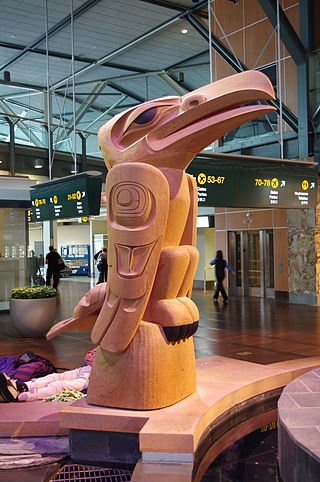
Dempsey Bob, is a Northwest Coast woodcarver and sculptor from British Columbia, Canada, who is of Tahltan and Tlingit First Nations descent. He was born in the Tahltan village of Telegraph Creek on the Stikine River in northwestern B.C., and is of the Wolf clan.
Freda Diesing was a Haida woman of the Sadsugohilanes Clan, one of very few female carvers of Northwest Coast totem poles and a member of the Council of the Haida Nation of British Columbia, Canada. Her Haida name is Skil Kew Wat, meaning "magical little woman."
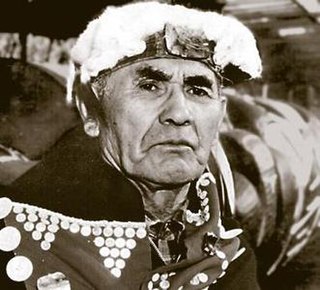
Chief Mungo Martin or Nakapenkem, Datsa, was an important figure in Northwest Coast style art, specifically that of the Kwakwaka'wakw Aboriginal people who live in the area of British Columbia and Vancouver Island. He was a major contributor to Kwakwaka'wakw art, especially in the realm of wood sculpture and painting. He was also known as a singer and songwriter.
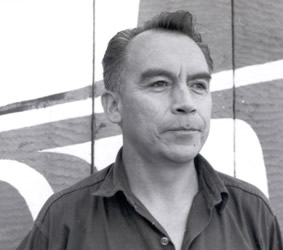
Henry Hunt was a First Nations woodcarver and artist from the Kwakwaka'wakw people of coastal British Columbia. He carved a number of totem poles which are on public display in Canada and internationally.

David A. Boxley is an American artist from the Tsimshian tribe in Alaska, most known for his prolific creation of Totem Poles and other Tsimshian artworks.
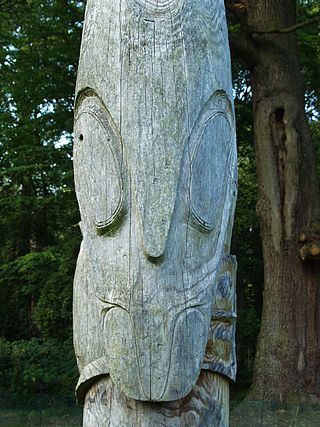
Norman Tait was a Nisga'a First Nations sculptor and totem pole carver from northwestern British Columbia, Canada.

Haida argillite carvings are a sculptural tradition among the Haida indigenous nation of the Northwest Coast of North America. It first became a widespread art form in the early 19th century, and continues today.
Ron Joseph Telek was a Canadian First Nations sculptor. He is a member of the Laxsgiik of the Nisga'a nation of northwestern British Columbia, and carries the hereditary name of Jagam Txalp meaning Four Canoes Coming into the Village. Telek's primary medium for his sculptures is wood, although he also includes other materials such as bone, moose hair and abalone into his work.
Chief William Jeffrey was a Canadian hereditary Tsimshian Chief, First Nations activist and carver. He attended residential school from 1914 to 1917. Though he desired to be a lawyer, his status as a First Nations person and government policy at the time prevented him from attending college for any profession other than the clergy.

Ellen Neel (1916–1966) was a Kwakwakaʼwakw artist woodcarver and is the first woman known to have professionally carved totem poles. She came from Alert Bay, British Columbia, and her work is in public collections throughout the world.

Nathan Jackson is an Alaska Native artist. He is among the most important living Tlingit artists and the most important Alaskan artists. He is best known for his totem poles, but works in a variety of media.

The Salish peoples are indigenous peoples of the American and Canadian Pacific Northwest, identified by their use of the Salishan languages which diversified out of Proto-Salish between 3,000 and 6,000 years ago.
The Gateway Pacific Terminal was a proposed export terminal at Cherry Point in Whatcom County, Washington, along the Salish Sea shoreline. It was announced in 2011 and would have exported coal, but was opposed by local residents and the Lummi Nation, who had an ancestral village site at Cherry Point. The terminal project was rejected by the U.S. Army Corps of Engineers in 2016, ruling that it would infringe on the fishing rights of the Lummi Nation.
Paul N. Luvera Sr. was an Italian immigrant to the United States with a sixth grade education who was a Washington State Senator from 1953 to 1957 and renowned totem pole carver whose work is displayed around the world.
Chief John Wallace (Haida) was a Haida people master carver who was commissioned in 1931 by the US Department of the Interior to carve two, 8-foot totem poles, "The Raven" and "The Chief's Daughter." These are in the collection of the Interior Museum. He also worked in Hydaburg Totem Park in the Tongass National Forest, Alaska.

Joseph Raymond Hillaire or Kwul-kwul’tw (1894–1967) was an American Indian sculptor of the Lummi (Lhaq’temish) tribe, known for his carved totem poles in the style of the Coast Salish peoples. In 1961 he carved the Kobe-Seattle Sister City Friendship Pole. Hillaire was the father of Pauline Hillaire Scälla, a well-known art historian and conservator specializing in the art of Northwest Coast peoples.

Stanley Clifford Hunt is a Canadian, First Nations Kwakiutl artist from British Columbia.
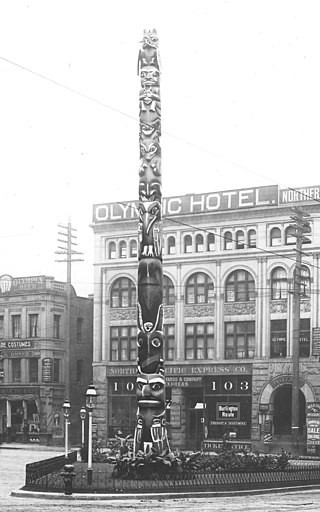
The Pioneer Square totem pole, also referred to as the Seattle totem pole and historically as the Chief-of-All-Women pole, is a Tlingit totem pole located in Pioneer Square in downtown Seattle, Washington.
Tim Paul is a member of the Hesquiaht tribe from the Nuu-Chah-Nulth first nation. He is a master carver from Esperanza Inlet British Columbia. He was the senior carver at the Royal British Columbia Museum until 1992 when he left to oversee an indigenous education program for the Port Alberni school board on Vancouver Island.













